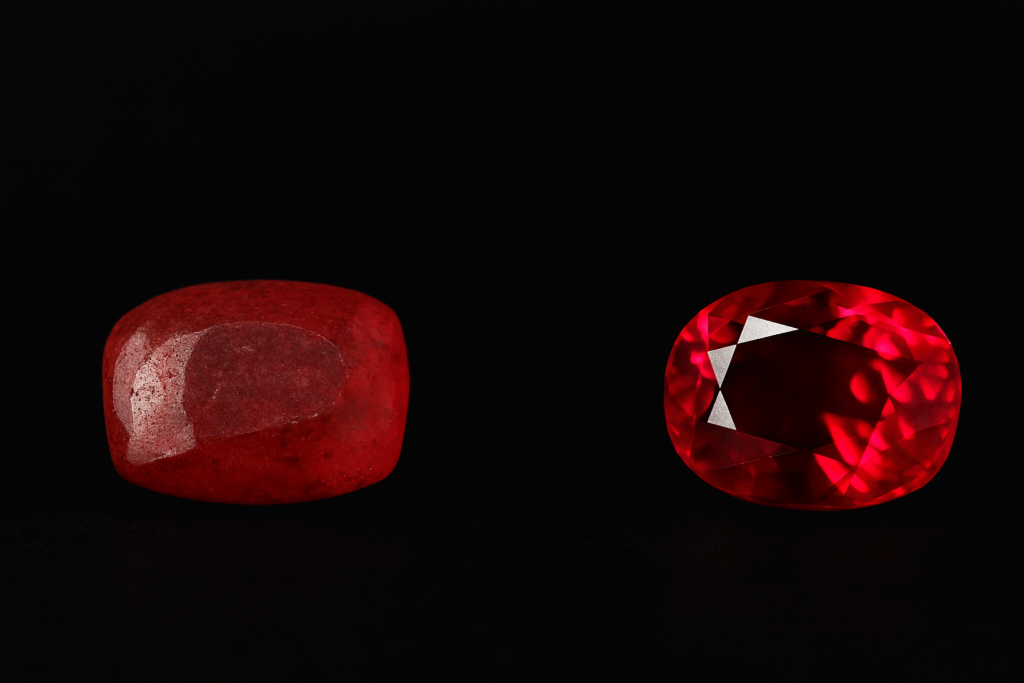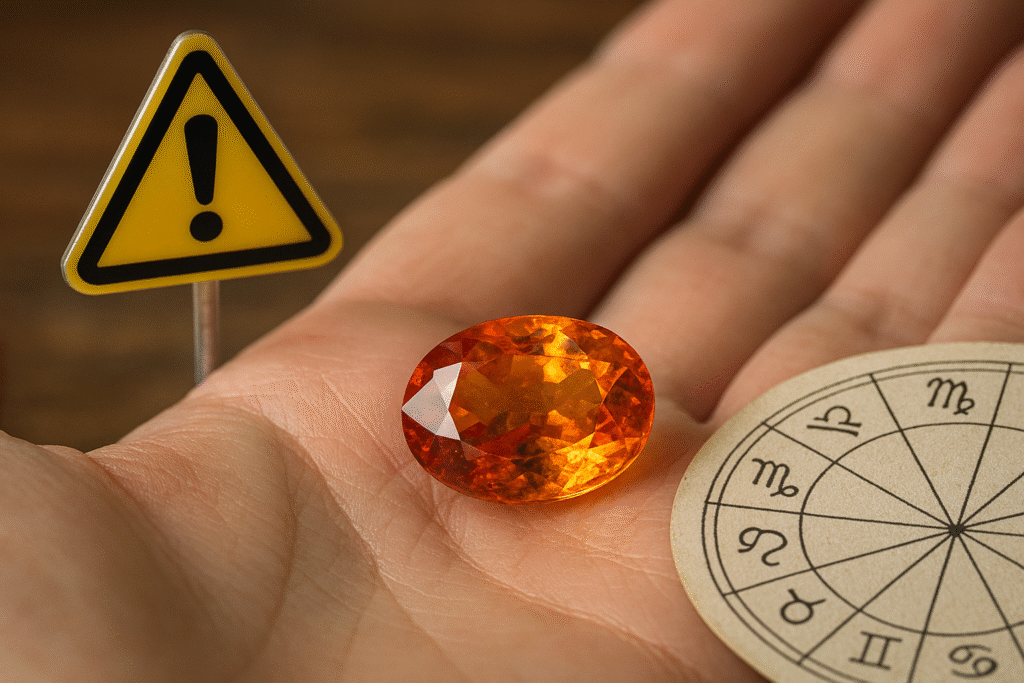Table of Contents
- Introduction
- What Is the Hidden Value in Old Cut Rubies?
- Why Recutting Old Cut Rubies Can Lower Value
- Auction Results That Prove the Value of Vintage Cuts
- Expert Advice on Preserving Vintage Ruby Cuts
- FAQs
Introduction
The hidden value in old cut rubies often surprises families. Many inherit a cushion or European cut ruby and immediately consider recutting. However, pausing to evaluate the gem first can reveal hidden benefits. In fact, preserving the original cut often increases both historical significance and market value. Additionally, collectors consistently pay higher prices for gems that retain their antique charm.
What Is the Hidden Value in Old Cut Rubies?
First, old cuts reflect craftsmanship from earlier centuries. They were designed for candlelight, which gives them a warm glow. As a result, these rubies stand apart from modern brilliants. Moreover, collectors prize authenticity, and auctions consistently confirm the strong demand for vintage cuts. Therefore, keeping the original style can significantly impact resale value.
Why Recutting Old Cut Rubies Can Lower Value
When you recut a ruby, you actively reduce carat weight. Even a 10–15% loss can significantly lower resale prices. Furthermore, reshaping erases the historical style that makes the gem special. Because of that, many experts recommend preserving the original cut. For example, reshaped heirlooms often lose market appeal despite improved sparkle.
Auction Results That Prove the Value of Vintage Cuts
- Sotheby’s sold a Burmese cushion ruby for 35% more than a recut equivalent.
- Likewise, family heirlooms I appraised in India lost half their market value after reshaping.
- In fact, market research shows vintage rubies in original cuts typically sell 20–40% higher than modified stones.
Expert Advice on Preserving Vintage Ruby Cuts
With over 40 years of global gemstone experience, I have learned this: “The key is to respect the cut your gemstone already carries.” Additionally, preserving old cuts protects both history and market value. Finally, collectors recognize and reward authenticity, which modern recuts rarely match.
Related Articles:
- To buy gems wisely, see Gemstone Buying Pitfalls Every Collector Should Avoid.
- To understand jewelry quality, visit Understanding BIS Hallmark: What It Means for Your Jewellery.
Explore More Here:
Auction data from Sotheby’s and Christie’s confirms ongoing demand for old cuts.
FAQ
Q1. What is the hidden value in old cut rubies?
The hidden value in old cut rubies comes from history, craftsmanship, and rarity. Vintage cuts often sell 20–40% higher than recut stones.
Q2. Should I recut my old ruby?
No, unless it is badly damaged. Recutting actively reduces carat weight and diminishes historical value.
Q3. How can I identify an old cut ruby?
Look for cushion-like shapes, high crowns, and deep pavilions. A gemologist can verify authenticity.
Q4. Where can I sell an old cut ruby?
Sell through auction houses or certified dealers that value vintage cuts.
Q5. Why do collectors pay more for old cut rubies?
Collectors actively seek authenticity and rarity. Original cuts preserve historical craftsmanship.
India Regional Cultures: A Complete Diversity Guide
India regional cultures are as diverse as its landscapes. This guide explores traditions, languages, and unique identities across the country. India Speaks FAQ on regional cultures reveals remarkable diversity across the subcontinent. Each state tells a unique story of tradition, heritage, and identity.
This India Speaks FAQ on regional cultures explores how geography, history, and local customs shape the cultural differences across India’s states and territories.
Understanding these regional differences helps you appreciate India’s true cultural richness.
What Makes India’s Regional Cultures Unique?
Each state develops its own distinct language, cuisine, and customs over centuries. Local history shapes traditions and daily life. Geography influences everything from clothing styles to building designs and lifestyle choices.
Examples of regional adaptation:
- Kashmir’s wooden homes with sloped roofs handle heavy snowfall
- Kerala’s houseboats work perfectly with extensive waterways and monsoon climate
- Rajasthan’s thick-walled buildings stay cool in desert heat
These regional adaptations show how different communities respond to their environment while keeping cultural identity.
How Do Regional Foods Reflect India’s Cultural Diversity?
Regional cuisine connects directly to local climate and crops. Coastal regions favor rice cultivation and seafood preparation. Northern states rely on wheat-based breads like roti, naan, and paratha.
Cooking methods vary significantly across regions:
- Mustard oil dominates Bengali cuisine
- Coconut oil is essential in Kerala cooking
- Ghee remains the preferred fat in Rajasthani dishes
When you travel across India, pay attention to these culinary differences. They reveal stories about the land, climate, and cultural preferences. India Speaks FAQ on regional cultures shows these food traditions matter.
Why Are Languages Central to Regional Identity in India?
India speaks through 22 official languages and hundreds of regional dialects. Each language carries unique cultural meaning. Language shapes traditional songs, folk tales, religious festivals, and social customs.
Language examples and their cultural significance:
- Tamil expresses the rich Dravidian heritage of South India
- Punjabi reflects Sikh traditions and agricultural lifestyle
- Bengali carries the literary legacy of Nobel laureate Rabindranath Tagore
- Hindi serves as a connecting language across northern states
Learning even a few local words helps you connect with regional communities. It shows respect for local culture.
What Role Do Festivals Play in India’s Regional Cultures?
Festivals serve as powerful expressions of regional identity. They bring communities together through shared traditions and celebrations. Each region celebrates differently based on local customs, crop cycles, and religious practices.
Regional festival examples:
- North India illuminates Diwali with millions of oil lamps and fireworks
- South India honors Pongal with harvest rituals celebrating farmers and nature
- West Bengal transforms during Durga Puja with art installations, classical music, and community feasting
Each festival reflects the unique cultural values and historical experiences of its region.
Which festival would you want to experience firsthand?
How Does Traditional Clothing Vary Across Indian Regions?
Climate conditions and available resources influence regional clothing styles across India. These variations demonstrate practical adaptation to different environments while maintaining aesthetic preferences.
Regional clothing examples:
- Rajasthan’s desert climate inspires bright turbans, flowing skirts, and mirror-work textiles that reflect heat
- Kerala’s humid tropical climate favors white cotton sarees with golden borders worn during festivals
- Nagaland’s mountainous terrain produces distinctive shawls featuring tribal symbols and geometric patterns
Each style represents clan identity and cultural heritage specific to its region.
How Do Regional Crafts and Arts Represent Cultural Identity?
Traditional crafts carry centuries of accumulated skill and cultural meaning. They serve as living expressions of regional identity. These art forms express creativity through traditions passed down through generations.
Regional craft examples:
- Bihar’s Madhubani paintings feature mythological themes and geometric patterns created by women during festivals
- Kerala’s Kathakali dance combines dramatic storytelling, classical music, and elaborate costumes
- Odisha’s traditional metalwork, particularly brass and bronze artifacts, carries deep ritual meaning in temple worship
Supporting these regional crafts helps preserve cultural heritage. It provides sustainable livelihoods for traditional artisans.
Why Should You Explore India’s Regional Cultures?
Exploring regional cultures offers experiences beyond visiting monuments and tourist attractions. You engage directly with daily life, authentic cuisine, and living languages.
Regional travel provides meaningful context rather than surface-level tourist highlights.
Benefits of regional cultural exploration:
- You connect with local communities on a personal level
- You taste authentic dishes prepared with traditional methods
- You hear regional languages and dialects in natural settings
- You witness festivals and ceremonies as they happen in daily life
Each regional visit deepens understanding of India’s diversity. It helps you appreciate how different communities adapt to their environments while keeping distinct cultural identities.
India Speaks FAQ on regional cultures demonstrates what makes the country culturally rich and endlessly fascinating for travelers and cultural enthusiasts.
Which region would you choose to explore first?




